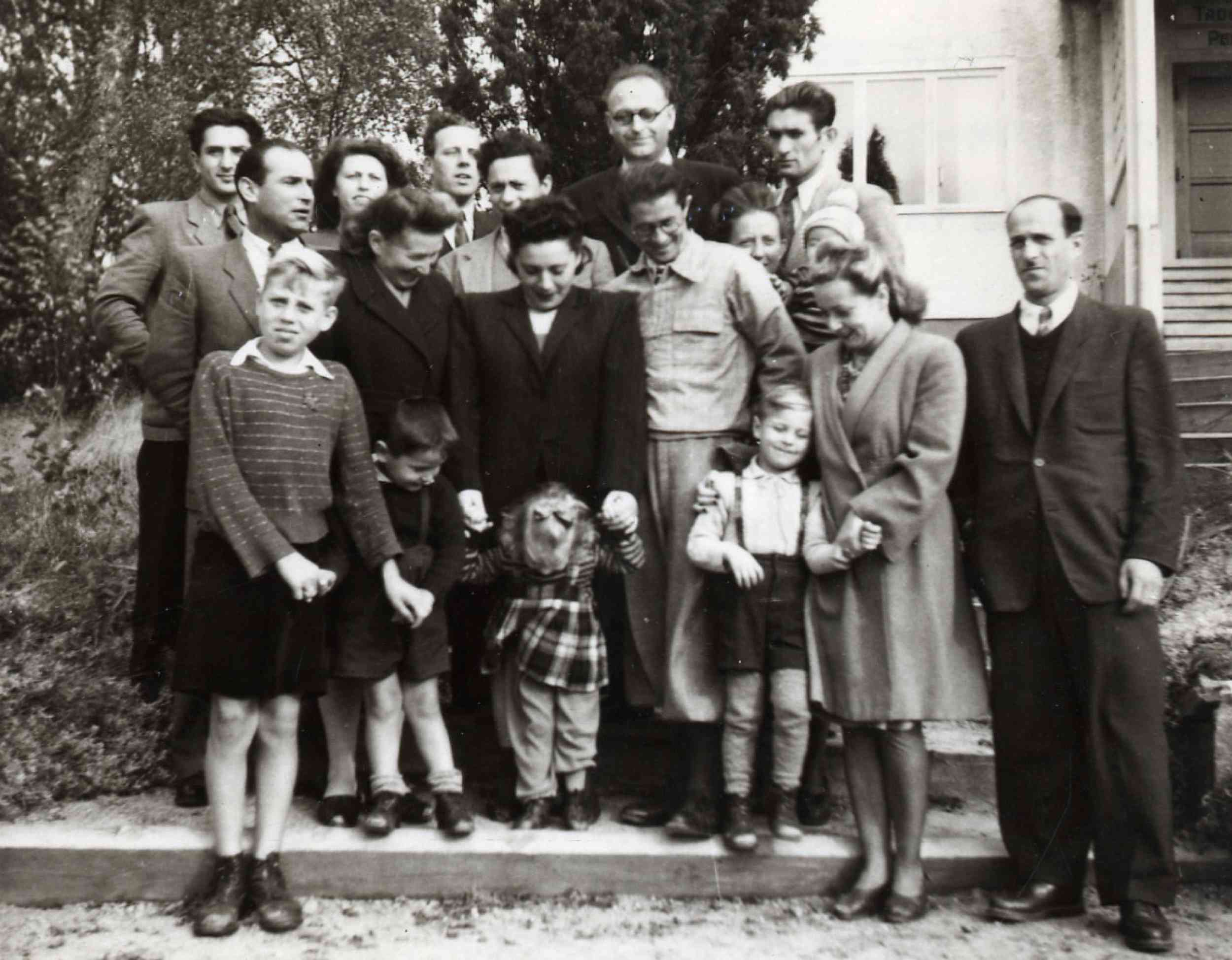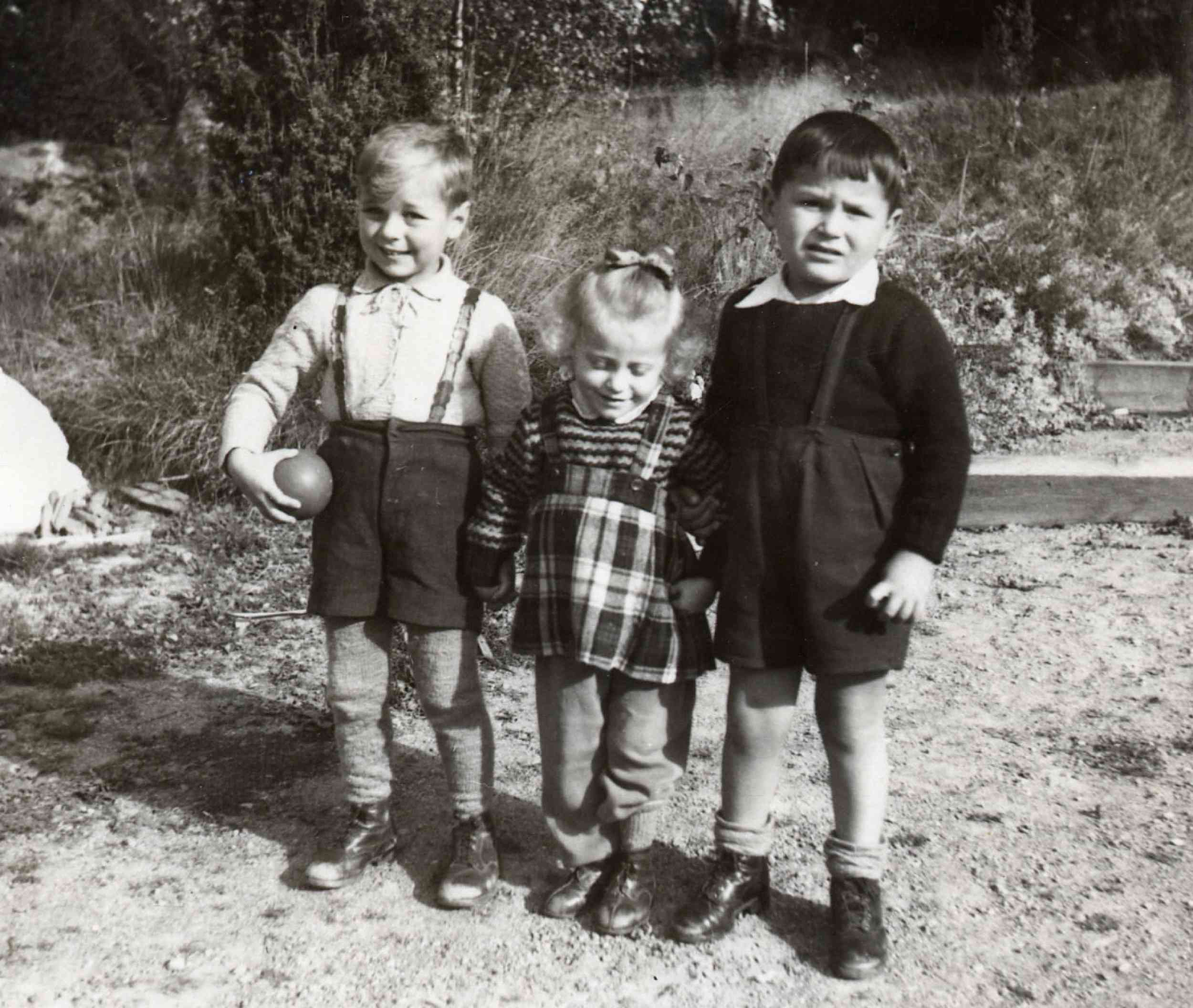The Bund in Sweden: Forgotten History Rediscovered in YIVO Archives
by ROBERTA NEWMAN
 Jewish refugees brought to Sweden by the Jewish Labor Committee, 1947. YIVO Archives, RG 120 Territorial Photographs – Sweden, General)
Jewish refugees brought to Sweden by the Jewish Labor Committee, 1947. YIVO Archives, RG 120 Territorial Photographs – Sweden, General)“No one has ever written about it. No one has ever known about it." Swedish labor historian Håkan Blomqvist pointed to the documents from the Bund Archives spread out in front of him in the YIVO Archives. “This is an aspect of Swedish history that has gone unexamined.”
Blomqvist, a professor of philosophy in history and the director of the Institute of Contemporary History at Södertörn University in Flemingsberg (a suburb of Stockholm), Sweden was at YIVO last week on one of the research trips he has been taking for several years, since he first learned of the existence of materials at YIVO documenting the Jewish Labor Bund in Sweden. A scholar who has written several books on Swedish labor history with a focus on nationalism and antisemitism related to the Swedish labor movement, he initially came to YIVO in 2010 to research those topics and was then alerted to the Bund materials by YIVO archivist Leo Greenbaum. This most recent trip was funded by a grant from The Foundation for Baltic and Eastern European Studies. He is being assisted in his research by Dr. Paul Glasser, former Dean of YIVO’s Max Weinreich Center.
The discovery of materials on the Bund in Sweden opened up a whole new line of inquiry for him. “The Swedish social democratic labor movement has always thought of itself as homogeneous—ethnically, politically—but it was actually more diverse,” he noted. His work focuses on the period of 1946 to the mid-1950s, when Jewish survivors of the Holocaust were coming and going in Sweden. Among the refugees were about 300 Bundists who coalesced around two influential individuals, Riga-born journalist Paul Olberg, a Bundist and Menshevik who had come to Sweden in 1933 as a refugee from Germany (where he had fled during the Bolshevik Revolution), and Sara Mehr, a Jewish tobacco worker from Grodno, who had come to Sweden much earlier, during the wave of strikes and labor unrest that swept Russia in 1904-1905.
In 1946, Olberg and Mehr joined forces to organize support for refugees from Poland and the Soviet Union who came to Sweden with the help of the Jewish Labor Committee (JLC). Olberg became the JLC representative in Sweden. "They became the nucleus of the Bund in Sweden," Blomqvist noted. “They were probably the only ones who were fluent in Swedish. They were the link between the Bundists and the Swedish labor movement." This was especially significant because of the dominance of the Swedish Social Democratic Party, which remained in power from 1932 until 1976.
Both Olberg and Mehr knew many of the leading Social Democrats because they had met them when years earlier in the years of revolution. Now the acquaintances of their youth were ministers in the government. In Sweden, Olberg became a loyal member of and activist for the Social Democratic Party. But in 1946, in the face of the arrival of Bundist Holocaust survivors in Sweden, he also reconnected with his Bundism, which had ceased to be central in his life during his time as a journalist in Germany. "He became a Bundist again in Sweden, Blomqvist pointed out. “It was like a Bundist revival for him when all the Bundist refugees came."
 Jewish refugees brought to Sweden by the Jewish Labor Committee, 1947. YIVO Archives, RG 120 Territorial Photographs – Sweden, General)
Jewish refugees brought to Sweden by the Jewish Labor Committee, 1947. YIVO Archives, RG 120 Territorial Photographs – Sweden, General)Examining Olberg’s life as a political and social activist, Blomqvist suggested, can shed new light on how the Bundists who came to Sweden after the war grappled with the new postwar world they encountered, in the shadow of the Holocaust and of the destruction of the mass base of their movement in Poland. How did they meet the challenges of the Cold War? How did they perceive Israel and Zionism?
“We can see an evolution of their opinions about Israel, just a slight reevaluation as time goes by. They softened their position on Israel, though they officially remained anti-Zionist.” Blomqvist pointed out that the Bund in Sweden regularly sent support to Bundist comrades in Israel.
When it came to the Cold War, Olberg, for one, was “a right-wing social democrat, but not when it came to domestic politics. There, he was a left-winger." The nuances of his political views challenge a stereotype that most people have in their minds about the Social Democratic Party: that its members were either right-wing or left-wing, across the board, in terms of both domestic and foreign policies.
"All this about the Bund in Sweden was totally unknown to Swedish labor historians,” Blomqvist commented. “And I would say that it is also unknown to those who study Swedish Jewish history." He noted that there is ample literature on the topic of Jewish refugees in Sweden, but nothing beyond a few footnotes about the role played by the Bund or the Jewish Labor Committee.
More on Professor Blomqvist’s research in progress can be read online in the article, “Lost Worlds of Labour - Paul Olberg, the Jewish Labour Bund, and Menshevik Socialism” from Götz, Norbert, ed., The Sea of Identities: A Century of Baltic and East European Experiences with Nationality, Class, and Gender (Huddinge : Södertörn University, 2014).




